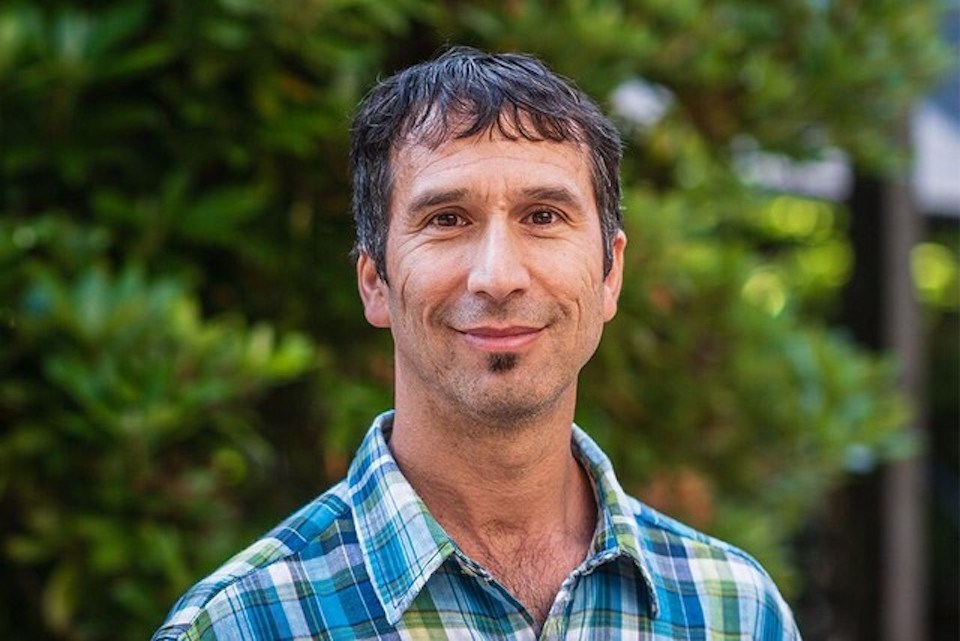A Kamloops man and PhD candidate at the University of British Columbia has been recognized for his research on incorporating Indigenous ways of knowing into engineering and construction projects.
This fall, Danilo Caron, a PhD candidate in civil engineering and a practicing engineer-in-training at Urban Systems, received the inaugural Indigenous and Black Engineering and Technology Momentum Fellowship from the UBC Faculty of Applied Science for his postgraduate research.
The fellowship is part of a Canada-wide initiative aiming to address the need for Indigenous and Black students to pursue STEM graduate studies, and provides recipients with mentorship, support and $30,000 in annual funding over four years.
Caron, whose mother belongs to the Sagamok Anishnawbek community, studied two building projects — one led by UBC and the other by the City of Vancouver — where project owners worked to incorporate Indigenous knowledge at early stages of development.
He then developed a framework for project delivery with Indigenous communities, intended to be used by those involved in building projects — from engineering and architecture to construction.
“What my framework hopes to do is prepare not only the owners of projects, but the designers and people who work on the projects themselves, how to incorporate Indigenous ways of knowing. And that happens at multiple stages,” Caron said.
He said the framework involves pre-learning, gaining a foundational knowledge of colonial history and ongoing impacts of policies like the Indian Act.
“During the project itself, though, there's a lot of mechanisms that owners and designers can use and select that can actually create avenues for intercultural collaboration,” Caron said.
Caron said the final, post-project phase involves steps to strengthen relationships with Indigenous communities and continue the learning process.
He noted the framework is intended to be cyclical — not necessarily a linear process.
"That's my hope, is that [project] owners and designers can continually be strengthening relationships with the communities that they serve, all with the intention of creating better projects certainly, but then also developing relationships and strengthening Indigenous communities along the way,” Caron said.
“Part of the mechanisms that owners can choose can bring in Indigenous communities in a deeper way, so that they're participants in the project, and they actually benefit through contractually fulfilling parts of the project, whether that be trades, design, consulting.”
Caron said there are some good examples in Canada — and in other places with a colonial history, like the United States, Australia and New Zealand — where project owners have developed deeper partnerships with Indigenous communities.
“They have to look outside of normal project delivery methods to create space for these types of deeper engagement. And then they also have to have the conviction to follow through,” Caron said.
He said one of the projects he studied as part of his research was led by UBC, where project designers met with knowledge keepers from the Musqueam Indian Band as they planned to construct a building for several health-related departments.
According to Caron, knowledge keepers told UBC the planned structure needed to either be smaller, or needed to move in order to be compatible with Musqueam principles of wellness, which are connected with ecological wellness.
“The university went back to the permitting process, and even their community plan, and then moved the building 10 meters to the north. And that really does cost millions of dollars to do because, although it's an empty lot to the north, that takes away the building space,” Caron said.
“When [UBC] got that news, it would have been very easy for them to kind of just say, well, this input is just too expensive. But to their credit, they actually went back to the drawing board essentially, and moved the building.”
Caron said all organizations and individuals involved in a building project can look to how they can practice reconciliation in different ways.
“If you're a development company, and you put up high rises, or mixed commercial and residential spaces, you have an opportunity to bring in knowledge keepers and designers with cultural lived experience and who hold different types of specialties to inform the process, so that your spaces honour the traditional territories,” Caron said.
Caron said in the future, he is looking at developing research projects that further this topic, particularly projects which explore questions that Indigenous communities themselves may have.
“There's no shortage, really, of gaps in how we as an industry collaborate. We have a long history of building stuff, and most of that history totally disregards the values of the communities in which the territory belongs,” Caron said.
“So we have a long way to go. So I do hope to work more closely with one or two communities to co-develop research.”



